flashback
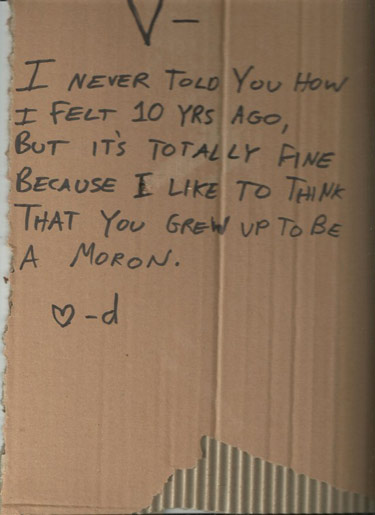
Behavioral modernity is a term used in anthropology, archeology and sociology to refer to a set of traits that distinguish present day humans and their recent ancestors from both other living primates and other extinct hominid lineages. It is the point at which Homo sapiens began to demonstrate a reliance on symbolic thought and to express cultural creativity. These developments are often thought to be associated with the origin of language.
There are two main theories regarding when modern human behavior emerged. One theory holds that behavioral modernity occurred as a sudden event some 50 kya (50,000 years ago) in prehistory, possibly as a result of a major genetic mutation or as a result of a biological reorganization of the brain that led to the emergence of modern human natural languages. Proponents of this theory refer to this event as the Great Leap Forward or the Upper Paleolithic Revolution.
The second theory holds that there was never any single technological or cognitive revolution. Proponents of this view argue that modern human behavior is the result of the gradual accumulation of knowledge, skills and culture occurring over hundreds of thousands of years of human evolution.
{ Wikipedia | Continue reading }
flashback | August 18th, 2012 3:57 pm
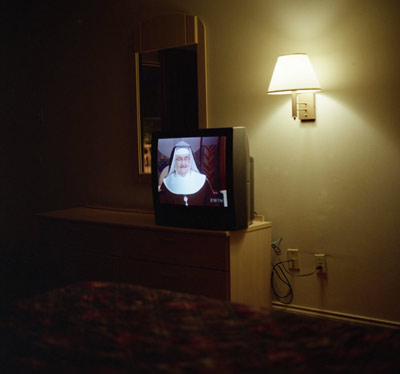
Religious belief is very common in Homo sapiens, with almost all cultures having some kind of supernatural belief that is important to their sense of identity, although that’s about the only unifying characteristic of these ideas. Within the spectrum of human society is a similarly broad spectrum of religious beliefs. These range from the simple “animal spirits” who are responsible for the unexplained (but not much else) to a “High” or “King” God who takes an active role in the world, dictating morals of a people he created.
Given the prevalence and importance of these religious ideas studying them is obviously something which greatly interests many evolutionary anthropologists. This interest is further amplified by the fact it is one of the behaviours which is most distinct from the animal kingdom, with few precedents found even in our closest relatives. Unfortunately, whilst we do have a decent understanding of when religious ideas arose, the hows and whys of their appearance are still unknown.
However, anthropologists have managed to identify certain factors which seem to be associated with the rise of complex religious beliefs (such as the “high” god). Notably, social and economic complexity. For example, animal sacrifice and altars in the Near East are consistently preceded by groups acquiring surplus food (and the economic and social changes associated with such an acquisition).
{ EvoAnth | Continue reading }
photo { Sandy Carson }
flashback, science | August 17th, 2012 4:00 pm

Plate tectonics is the process that underpins much of our understanding of the Earth. It explains many aspects of the Earth, from magnetic patterns in oceanic rocks to the distribution of plants and animals. How unusual is it? Well, it doesn’t seen to be happening on other rocky planets in our solar system. Many geologists have argued that plate tectonics wasn’t active during the earth’s early history. As astronomers find many rocky planets in other solar systems, the question of understanding how ‘typical’ plate tectonics has implications beyond the earth. How long has it been going on – how old is it?
{ Metageologist | Continue reading }
elements, flashback, science | August 12th, 2012 2:35 pm
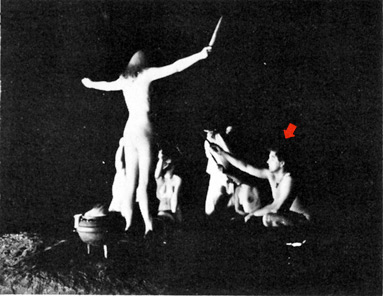
When analyzing cremated remains it is important to be aware of the broader burial and not focus so narrowly on the remains themselves if one wants to be able to understand the funeral process. We can learn a lot about the funeral from the bones themselves when they have been burned. The coloring on the remains, the amount of warping and the completeness can reveal fire temperature, how the body was placed on the pyre, whether it was clothed or was burned as dried bone, and if there were any problems with the burning (such as interruption by weather or incomplete incineration). However, often when cremation remains are collected there are macrobotanical or charcoal fragments which can further aid in interpretation by revealing details of the actual pyre construction.
Moskal-del Hoyo (2012) discusses the charcoal remains from Polish cremation necropoli in a new article from the Journal of Archaeological Sciences. She posits that analysis of the wood remains from pyre construction could be revealing about the identities of the individuals and the various necropoli.
{ Bones don’t lie | Continue reading }
fire, flashback, science | August 2nd, 2012 12:19 pm

Most people think that even though it is possible that they are dreaming right now, the probability of this is very small, perhaps as small as winning the lottery or being struck by lightning. In fact the probability is quite high. Let’s do the maths.
{ OUP | Continue reading }
image { Dr. Julius Neubronner’s Miniature Pigeon Camera }
birds, flashback, psychology, technology | July 21st, 2012 4:47 am

At some point in evolution, our ancestors switched from walking on all four limbs to just two, and this transition to bipedalism led to what is referred to as the obstetric dilemma. The switch involved a major reconfiguration of the birth canal, which became significantly narrower because of a change in the structure of the pelvis. At around the same time, however, the brain had begun to expand.
One adaptation that evolved to work around the problem was the emergence of openings in the skull called fontanelles. The anterior fontanelle enables the two frontal bones of the skull to slide past each other, much like the tectonic plates that make up the Earth’s crust. This compresses the head during birth, facilitating its passage through the birth canal.
In humans, the anterior fontanelle remains open for the first few years of life, allowing for the massive increase in brain size, which occurs largely during early life. The opening gets gradually smaller as new bone is laid down, and is completely closed by about two years of age, at which time the frontal bones have fused to form a structure called the metopic suture. In chimpanzees and bononbos, by contrast, brain growth occurs mostly in the womb, and the anterior fontanelle is closed at around the time of birth.
{ Neurophilosophy/Guardian | Continue reading }
image { Lola Dupré }
brain, flashback, kids, science | July 18th, 2012 2:29 pm

Excavations at Cladh Hallan, a Bronze Age-Iron Age settlement on South Uist in the Outer Hebrides off the west coast of Scotland, revealed the skeletons of two adults, a sub-adult and a child buried beneath the foundations of three roundhouses. Osteological and isotopic evidence has shown that the male adult skeleton is a composite made up of parts of at least three different individuals. To test the hypothesis that the female skeleton was also a composite we examined ancient DNA from four of its components: the skull, mandible, right humerus and right femur. […]
It was concluded that the mandible, humerus and femur come from different individuals. Insufficient data were obtained to draw conclusions regarding the origin of the skull.
The presence of two composite skeletons at Cladh Hallan indicates that the merging of identities may have been a deliberate act, perhaps designed to amalgamate different ancestries into a single lineage.
{ ScienceDirect | Continue reading }
Mummies found off the coast of Scotland are Frankenstein-like composites of several corpses, researchers say. […]
Carbon dating these remains and their surroundings revealed these bodies were buried up to 600 years after death — to keep bodies from rotting to pieces after such a long time, they must have been intentionally preserved, unlike the bodies of animals also buried at the site, which had been left to decay. […]
The first composite was apparently assembled between 1260 B.C. and 1440 B.C., while the second composite was assembled between 1130 B.C. and 1310 B.C. “There is overlap, but the statistical probability is that they were assembled at different times,” Parker-Pearson said.
{ Discovery | Continue reading }
photo { Ron Jude }
flashback, science | July 17th, 2012 8:09 am

Are human beings intrinsically good but corruptible by the forces of evil, or the reverse, innately sinful yet redeemable by the forces of good? […]
Until about three million years ago the ancestors of Homo sapiens were mostly vegetarians, and they most likely wandered in groups from site to site where fruit, tubers, and other vegetable food could be harvested. Their brains were only slightly larger than those of modern chimpanzees. By no later than half a million years ago, however, groups of the ancestral species Homo erectus were maintaining campsites with controlled fire — the equivalent of nests — from which they foraged and returned with food, including a substantial portion of meat. Their brain size had increased to midsize, between that of chimpanzees and modern Homo sapiens. The trend appears to have begun one to two million years previously, when the earlier prehuman ancestor Homo habilis turned increasingly to meat in its diet. With groups crowded together at a single site, and an advantage added by cooperative nest building and hunting, social intelligence grew, along with the centers of memory and reasoning in the prefrontal cortex.
Probably at this point, during the habiline period, a conflict ensued between individual-level selection, with individuals competing with other individuals in the same group, versus group-level selection, with competition among groups. The latter force promoted altruism and cooperation among all the group members. It led to group-wide morality and a sense of conscience and honor. The competitor between the two forces can be succinctly expressed as follows: within groups selfish individuals beat altruistic individuals, but groups of altruists beat groups of selfish individuals. Or, risking oversimplification, individual selection promoted sin, while group selection promoted virtue.
{ Opinionator/NY Times | Continue reading }
flashback, ideas, psychology, relationships | June 28th, 2012 10:33 am

Disease has changed since 1812. People have different diseases, doctors hold different ideas about those diseases, and diseases carry different meanings in society. […]
Disease is always generated, experienced, defined, and ameliorated within a social world. Patients need notions of disease that explicate their suffering. Doctors need theories of etiology and pathophysiology that account for the burden of disease and inform therapeutic practice. Policymakers need realistic understandings of determinants of disease and medicine’s impact in order to design systems that foster health. The history of disease offers crucial insights into the intersections of these interests and the ways they can inform medical practice and health policy. […]
The bill of mortality from 1811 contains both the familiar and the exotic. Consumption, diarrhea, and pneumonia dominated the mortality data, but teething, worms, and drinking cold water apparently killed as well. […] Doctors agreed that even a near miss by a cannonball — without contact — could shatter bones, blind people, or even kill them. Reports of spontaneous combustion, especially of “brandy-drinking men and women,” received serious, if skeptical, consideration. […]
A century later, the infections had been redefined according to specific microbial causes. The Journal ran reviews of tuberculosis, gonorrhea, and syphilis. Diphtheria, measles, pneumonia, scarlet fever, and typhoid made frequent cameos, and Massachusetts still maintained a leper colony on Penikese Island.
{ New England Journal of Medicine | Continue reading }
unrelated { Miami Cannibal attacker was not on bath salts, just marijuana }
flashback, health | June 28th, 2012 10:04 am

The fork is a latecomer to the table. Knives are the descendants of sharpened hand axes—the oldest human tools. It is likely that the first spoons derived from whichever local objects were used to scoop up liquid. […] But the fork didn’t have a place at the Greek table, where people used spoons, knife points, and their hands.
{ Slate | Continue reading }
flashback, food, drinks, restaurants | June 26th, 2012 11:33 am
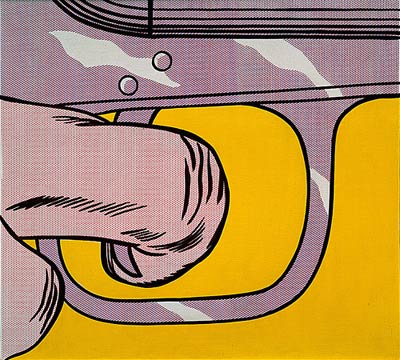
One of the more memorable encounters in the history of modern art occurred late in 1961 when the period’s preeminent avant-garde dealer, Leo Castelli, paid a call at the Upper East Side Manhattan townhouse-cum-studio of Andy Warhol, whose pioneering Pop paintings based on cartoon characters including Dick Tracy, the Little King, Nancy, Popeye, and Superman had caught the eye of Castelli’s gallery director, Ivan Karp, who in turn urged his boss to go have a look for himself. Warhol, eager to make the difficult leap from commercial artist to “serious” painter, decades later recalled his crushing disappointment when Castelli coolly told him, “Well, it’s unfortunate, the timing, because I just took on Roy Lichtenstein, and the two of you in the same gallery would collide.”
Although Lichtenstein, then a thirty-eight-year-old assistant art professor at Rutgers University’s Douglass College in New Jersey, was also making pictures based on comic-book prototypes—an example of wholly independent multiple discovery not unlike such scientific findings as calculus, oxygen, photography, and evolution—he and Warhol were in fact doing quite different things with similar source material, as the divergent tangents of their later careers would amply demonstrate. By 1964, Castelli recognized his mistake and added the thwarted aspirant to his gallery roster, though not before Warhol forswore cartoon imagery, fearful of seeming to imitate Lichtenstein, of whom he always remained somewhat in awe.
In fact, what Lichtenstein and his five-years-younger contemporary Warhol had most in common was being the foremost exemplars of Cool among their generation of American visual artists. The first half of the 1960s was the apogee of what might be termed the Age of Cool—as defined by that quality of being simultaneously with-it and disengaged, in control but nonchalant, knowing but ironically self-aware, and above all inscrutably undemonstrative.
{ NY Review of Books | Continue reading }
flashback, warhol | June 4th, 2012 6:00 am

I myself spent nine years in an insane asylum and I never had the obsession of suicide, but I know that each conversation with a psychiatrist, every morning at the time of his visit, made me want to hang myself, realizing that I would not be able to cut his throat.
{ Antonin Artaud, Van Gogh: The Man Suicided by Society, 1947 }
No one personifies the thorny entanglement between modernism and the science of the soul better than Dr. Gaston Ferdière, the psychiatrist who administered no less than 58 electroshock treatments to the Surrealist playwright Antonin Artaud during the Second World War. Determined to reconcile poetry and medicine, Ferdière had studied under “Professor Claude”— target of Breton’s anti-psychiatric rants—at Sainte-Anne while at the same time passing as a “star of Surrealism in the bistros” of Paris in the mid-1930s. A friend of Breton, Desnos, Péret, and Crevel, the young Dr. Ferdière arranged to have a mural painted in the Sainte-Anne guardhouse by an artist close to the movement, and he even published several volumes of poetry himself.
By the time Artaud showed up on his doorstep at Rodez psychiatric hospital, Ferdiére had long since abandoned his poetic aspirations. Yet his old interests were rekindled in long conversations with the Surrealist playwright, whose talents he sought to revive by a combination of “art therapy”—writing, drawing, translating Lewis Carroll’s Through the Looking Glass—and shock treatments—six courses ranging from 4 to 13 sessions each between June 20th, 1943 and January 24th, 1945. Electroshock was still in its experimental phase—the machine had hardly rolled in the door at Rodez—and the convulsions were so severe that Artaud fractured a vertebra in his neck during one of the treatments.
The strange case of Ferdière and Artaud remains a source of controversy to this day. On the one hand, there can be little doubt that the psychiatrist saved Artaud’s life by taking him in. The playwright had been confined to various mental hospitals since suffering a psychotic break in 1936, but with the outbreak of war the Nazis restricted food supplies to asylum patients, and by 1943 Artaud was on the brink of starvation. Spirited out of Occupied France to the “free zone,” he quickly recovered under the care of Dr. Ferdière, who openly defied the restrictions and kept his patients well fed by working the black market.
{ Yale University, | PDF | Antonin Artaud (1896 – 1948) was a French playwright, poet, actor and theatre director. | Wikipedia }
artwork { Robert Motherwell, Africa Suite, Africa 6, 1970 }
flashback, ideas, poetry, psychology | May 23rd, 2012 6:36 am
Proust, flashback, photogs | May 15th, 2012 12:02 pm

Mummies were stolen from Egyptian tombs, and skulls were taken from Irish burial sites. Gravediggers robbed and sold body parts.
“The question was not, ‘Should you eat human flesh?’ but, ‘What sort of flesh should you eat?’ ” says Sugg. […]
Blood was procured as fresh as possible, while it was still thought to contain the vitality of the body. This requirement made it challenging to acquire. The 16th century German-Swiss physician Paracelsus believed blood was good for drinking, and one of his followers even suggested taking blood from a living body. […]
As science strode forward, however, cannibal remedies died out. The practice dwindled in the 18th century, around the time Europeans began regularly using forks for eating and soap for bathing. But Sugg found some late examples of corpse medicine: In 1847, an Englishman was advised to mix the skull of a young woman with treacle (molasses) and feed it to his daughter to cure her epilepsy. (He obtained the compound and administered it, as Sugg writes, but “allegedly without effect.”)
{ Smithsonian | Continue reading }
photo { Volgareva Irina }
blood, flashback, food, drinks, restaurants, gross, health | May 8th, 2012 5:06 am

Surgery is a profession defined by its authority to cure by means of bodily invasion. The brutality and risks of opening a living person’s body have long been apparent, the benefits only slowly and haltingly worked out. Nonetheless, over the past two centuries, surgery has become radically more effective, and its violence substantially reduced — changes that have proved central to the development of mankind’s abilities to heal the sick.
The first volume of the New England Journal of Medicine and Surgery, and the Collateral Branches of Science, published in 1812, gives a sense of the constraints faced by surgeons, and the mettle required of patients, in the era before anesthesia and antisepsis.
{ New England Journal of Medicine | Continue reading }
artwork { Picasso, Standing Female Nude, 1910 }
flashback, health | May 4th, 2012 7:03 am
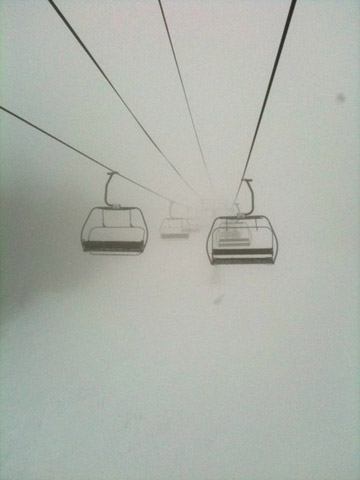
Everybody is African in origin. Barring a smattering of genes from Neanderthals and other archaic Asian forms, all our ancestors lived in the continent of Africa until 150,000 years ago. Some time after that, say the genes, one group of Africans somehow became so good at exploiting their environment that they (we!) expanded across all of Africa and began to spill out of the continent into Asia and Europe, invading new ecological niches and driving their competitors extinct.
There is plenty of dispute about what gave these people such an advantage—language, some other form of mental ingenuity, or the collective knowledge that comes from exchange and specialization—but there is also disagreement about when the exodus began. For a long time, scientists had assumed a gradual expansion of African people through Sinai into both Europe and Asia. Then, bizarrely, it became clear from both genetics and archaeology that Europe was peopled later (after 40,000 years ago) than Australia (before 50,000 years ago). (…)
Sea levels were 150 feet lower then, because the cold had locked up so much moisture in northern ice-caps, so not only were most Indonesian islands linked by land, but the Persian Gulf was dry and, crucially, the southern end of the Red Sea was a narrow strait.
{ WSJ | Continue reading }
flashback | May 4th, 2012 5:55 am

The Black Death was one of the most devastating pandemics in human history, peaking in Europe between 1348 and 1350. Although there were several competing theories as to the etiology of the Black Death, it has been conclusively proven via analysis of ancient DNA from plague victims in northern and southern Europe that the pathogen responsible is the Yersinia pestis bacterium. Thought to have started in China, it travelled along the Silk Road and reached the Crimea by 1346.
From there it was probably carried by Oriental rat fleas living on the black rats that were regular passengers on merchant ships. It spread throughout the Mediterranean and Europe.
The Black Death is estimated to have killed 30–60 percent of Europe’s population, reducing world population from an estimated 450 million to between 350 and 375 million in the 14th century.
The aftermath of the plague created a series of religious, social and economic upheavals, which had profound effects on the course of European history. It took 150 years for Europe’s population to recover. The plague returned at various times, killing more people, until it left Europe in the 19th century.
{ Wikipedia | Continue reading }
These persecutions were the burning of Jews between 1348 and 1351, when in anticipation of, or shortly after, outbreaks of plague Jews were accused of poisoning food, wells and streams, tortured into confessions, rounded up in city squares or their synagogues, and exterminated en masse.
{ Oxford Journals | Continue reading }
How persistent are cultural traits? This paper uses data on anti-Semitism in Germany and finds continuity at the local level over more than half a millennium. When the Black Death hit Europe in 1348-50, killing between one third and one half of the population, its cause was unknown. Many contemporaries blamed the Jews. Cities all over Germany witnessed mass killings of their Jewish population. At the same time, numerous Jewish communities were spared. We use plague pogroms as an indicator for medieval anti-Semitism. Pogroms during the Black Death are a strong and robust predictor of violence against Jews in the 1920s, and of votes for the Nazi Party. In addition, cities that saw medieval anti-Semitic violence also had higher deportation rates for Jews after 1933, were more likely to see synagogues damaged or destroyed in the ‘Night of Broken Glass’ in 1938, and their inhabitants wrote more anti-Jewish letters to the editor of the Nazi newspaper Der Stürmer.
{ SSRN | Continue reading }
I read somewhere — and the person who wrote this was not a mountaineer but a sailor — that the sea’s only gifts are harsh blows and, occasionally, the chance to feel strong. Now, I don’t know much about the sea, but I do know that that’s the way it is here. And I also know how important it is in life not necessarily to be strong but to feel strong, to measure yourself at least once, to find yourself at least once in the most ancient of human conditions, facing blind, deaf stone alone, with nothing to help you but your own hands and your own head…
{ Primo Levi | Continue reading }
painting { Pieter Bruegel, The Triumph of Death, c. 1562 }
flashback | May 1st, 2012 9:00 am

How awesome is this treasure trove of emails, documents, files et al. placed online by the NY Fed?
Some of the emails between Lehman execs are laughable — naive, silly, hubristic, childish.
But my favorite piece simply has to be the Morgan Stanley research report from June 30, 2008 “Overweight Rating” on Lehman Brothers — “Bruised, Not Broken, Poised for Profitability.” 60 days later, Lehman Brothers filed what was then the largest bankruptcy in the United States.
{ Ritholtz | Continue reading }
hatchet { Christopher Roth }
economics, flashback | May 1st, 2012 8:00 am

A single-celled organism in Norway has been called “mankind’s furthest relative.” It is so far removed from the organisms we know that researchers claim it belongs to a new base group, called a kingdom, on the tree of life. (…)
The organism, a type of protozoan, was found by researchers in a lake near Oslo. (…) They found it doesn’t genetically fit into any of the previously discovered kingdoms of life. It’s an organism with membrane-bound internal structures, called a eukaryote, but genetically it isn’t an animal, plant, fungi, algae or protist (the five main groups of eukaryotes).
{ LiveScience | Continue reading }
flashback, mystery and paranormal, science | April 30th, 2012 5:47 am
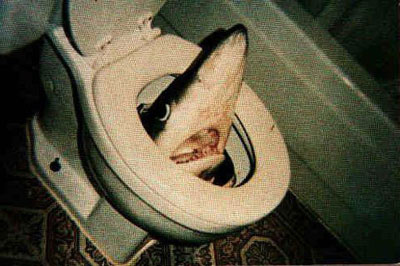
Efforts to “recruit” subjects were often illegal, even though actual use of LSD was legal in the United States until October 6, 1966. In Operation Midnight Climax, the CIA set up several brothels in San Francisco, California to obtain a selection of men who would be too embarrassed to talk about the events. The men were dosed with LSD, the brothels were equipped with two-way mirrors, and the sessions were filmed for later viewing and study.
Some subjects’ participation was consensual, and in these cases they appeared to be singled out for even more extreme experiments. In one case, volunteers were given LSD for 77 consecutive days.
{ Wikipedia | Continue reading }
U.S., flashback | April 25th, 2012 3:36 pm






















